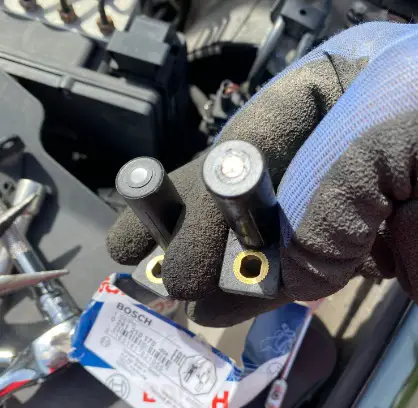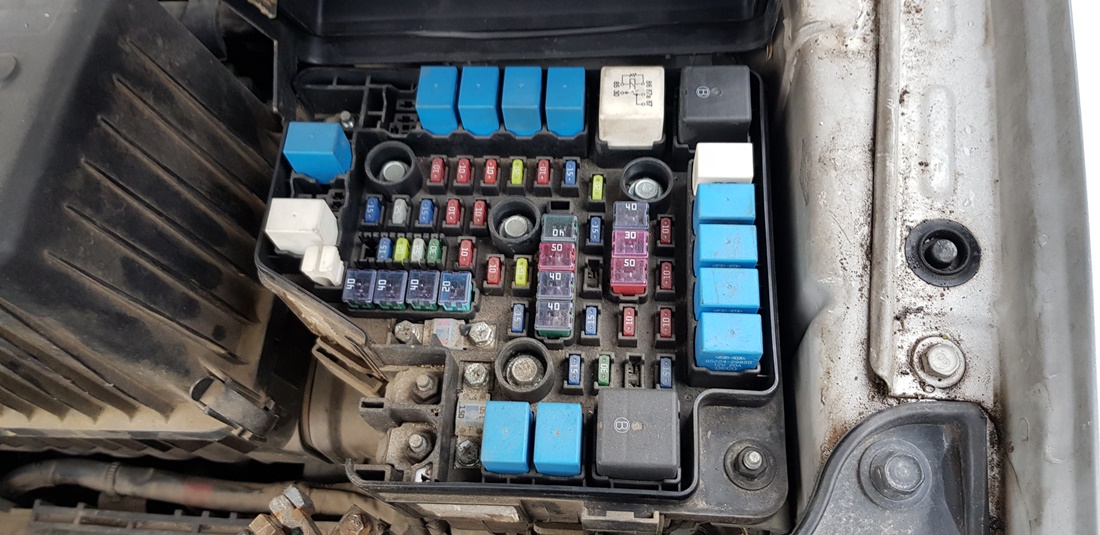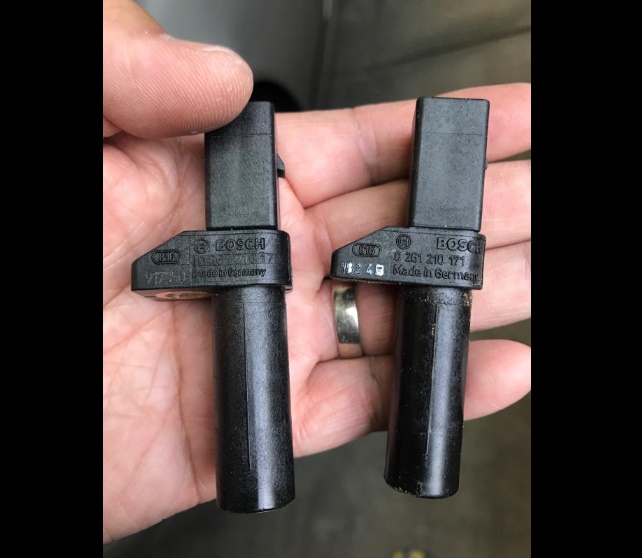It’s happened to all of us. You’re driving along and suddenly you hear a loud screeching noise. Chances are, your brakes need cleaning. But how do you clean brakes without removing the wheel?
Brakes are an essential part of any vehicle, and they need to be kept in good condition in order to ensure safety while driving. In this blog post, we will discuss the easiest way to clean your brakes without removing the wheel!
- Key Takeaway
- What Are Car Brakes
- How To Clean Brakes Without Removing The Wheel
- How Often Should You Clean The Brakes?
- Signs That Your Brakes Need Cleaning
- What Causes Dirty Brakes In a Car
- How Do I Stop My Brakes From Squeaking Without Removing The Wheels?
- How Do You Remove Rust From Brake Discs Without Removing The Wheel?
- FAQs
- Q: What is a brake cleaner spray?
- Q: How do I use a brake cleaner spray to clean my brakes?
- Q: Can I use water to clean my brakes?
- Q: What are the benefits of cleaning my brakes?
- Q: Can I clean my brakes with the wheel on?
- Q: Can I use any brush to clean my brakes?
- Q: Do I need to wear gloves when cleaning my brakes?
- Q: Can I clean my brakes with the engine running?
- In Conclusion
Key Takeaway
- To clean brakes without removing the wheel, you can spray a brake cleaner onto the rotor, scrub off as much grime as possible with a brush and cloth, or apply a soap and water solution, allowing it to dry completely before removing any remaining residue.
- It’s advisable to clean your brakes periodically as part of preventive maintenance, and a good rule of thumb is to have your brakes checked and cleaned whenever you rotate your tires, typically every six months.
- Signs that your brakes need cleaning include squeaky or grinding noises, a metallic sound when braking, unusual vibrations, leaking fluid, and a brake warning light on your dashboard.
What Are Car Brakes
Car brakes are a critical safety component in vehicles that allow the driver to slow down or stop the vehicle when needed.
They work on the principle of friction, converting kinetic energy into thermal energy.
The braking system typically consists of components such as the brake pedal, master cylinder, brake lines, brake discs or drums, brake pads or shoes, and calipers.
When you press the brake pedal, it triggers the master cylinder to release brake fluid through the brake lines, causing the brake pads or shoes to press against the brake discs or drums, creating friction, which slows down or stops the vehicle.
Different types of braking systems include disc brakes and drum brakes, and some cars use a combination of both.
How To Clean Brakes Without Removing The Wheel

- Start off by cleaning the brakes with warm water and a sponge.
- Let the brakes dry completely.
- Spray the brakes with a brake cleaner.
- Make sure to remove any debris.
- Let the brakes completely dry.
- Take your vehicle for a test drive and test the brakes.
Cleaning the brakes is very important and has to be done from time to time. There is a way to clean the brakes without removing the wheel. This will stop your brakes from squeaking and will remove the rust from brake discs. Here is how to clean the brakes without removing the wheel:
1. Required items for the task
- Brake cleaner (see on amazon.com)
- Bucket with warm water
- Sponge
2. Verify that your brakes need cleaning

Check brake pad is a warning light that comes on when your brake pads are worn down and need to be replaced, or need cleaning. To verify that your brakes need cleaning, you need to check and see if the brake pads are not completely worn.
In my case, the brake pads were brand new, but I constantly got this message on my dashboard. So, I have decided to clean the brakes and see if it fixes the issue.
3. Clean the brakes with warm water

Brake pads and shoes press against the brake rotors and drums to create friction that stops the vehicle. Over time, this process wears down the brake pads and shoes, as well as the rotors and drums. As these parts wear down, they begin to create dust.
This dust is made up of steel particles from the brake pads, as well as other materials like road debris, dirt, and grease. The dust accumulates on the wheels and can eventually make its way into the brake system, where it can cause problems.
So, grab a bucket with warm water and a sponge. Clean the wheels and the brakes the best you can. It is important to clean the big debris first. You can also add some dish soap, but you don’t have to. Clean all four wheels/brakes before continuing to the next step.
4. Let the brakes dry completely

It is important to let the wheels completely dry before applying the brake cleaner. This is mainly because if you apply the brake cleaner on a wet brake, it will wash out and won’t have the best effect.
So, while one wheel is drying out, move on to the next one and clean it with some warm water.
5. Spray the brakes with a brake cleaner

Now that the brakes have been cleaned with water and are completely dry, it is time to use the brake cleaner. The brake cleaner is designed to remove grease, brake dust, brake fluids, oils, and other contaminants that can be found on the brakes.
In general, most brake cleaners can be used on ABS, discs, drums, brake drums, shoes, calipers, clutch discs, and disc brake pads. But most importantly, the brake cleaner will not cause any damage to your rims.
The whole bottle of brake cleaner is enough for four wheels. So, spray each brake through the openings in the rims equally so you have enough cleaner for all four wheels. Make sure to get the brake cleaner from all angles.
6. Let the brakes dry

The brake cleaner dries out in a matter of minutes. So, once you spray all of the brakes with brake cleaner, make sure to leave it for at least five minutes to dry. Then, take your vehicle for a test drive. At this point, the brakes should stop squealing. Also, this procedure will take care of any rust and debris that can be found on the brakes.
How Often Should You Clean The Brakes?
It’s recommended to clean your brakes at least once a year as a preventive measure to ensure they’re working correctly and to prevent future damage.
Some sources suggest that a thorough cleaning and lubrication service should be done annually if you drive regularly.
However, others suggest that servicing your brakes, which could include cleaning, should be done at least twice a year due to the effects of cold and heat, or every 18,000 miles.
Regardless of the frequency, regular brake inspections are crucial to maintaining safe driving conditions says BerryManProducts.
Signs That Your Brakes Need Cleaning
- Squeaking or squealing noises when you apply the brakes.
- Reduced braking efficiency or longer stopping distances.
- Vibration or pulsation in the brake pedal when pressed.
- The car pulls to one side when you brake.
- A grinding noise which could indicate worn-out brake pads.
- The presence of brake dust on your wheels.
- The brake pedal feels softer or sinks further to the floor than usual.
- The ABS (Anti-lock Braking System) warning light comes on.
What Causes Dirty Brakes In a Car
- Exposure to dirt and water, which can cause rusting or warping of the brake rotor.
- Accumulation of brake dust, which can lead to uneven braking.
- Driving on roads with a lot of debris, leading to embedded dirt in the brake system.
- Contaminated brake fluid, which can cause squealing, grinding, or scraping sounds.
- Moisture on the brake rotors, especially after the car has been sitting in a humid area.
- General wear and tear over time.
How Do I Stop My Brakes From Squeaking Without Removing The Wheels?
If your brakes have been squeaking and driving you crazy, there is a way to fix this. Usually, this job requires removing the wheel and disassembling the brakes. However, today I am going to show you how to stop your brakes from squeaking without removing the wheels. Here is how:
1. Required tools
- Lubricating copper spray (anti-seize) from amazon.com.
- Soapy water
- Sponge
2. Wash the brakes with soapy water

Start by washing all four wheels and brakes with some soapy water and a sponge. By doing so, you will remove any large dirt and debris that might have gotten stuck between the brake caliper and brake disc.
Many times, a small rock will get stuck between the caliper and disc, and each time you press the brakes, it is actually the rock that will cause the squeaking noise.
3. Let the wheels dry completely

Before moving out to the next step, you need to let the wheels and the brakes dry out completely. If its a sunny day, the brakes will dry in about thirty minutes.
4. Apply the anti-seize copper spray
A can of anti-seize copper spray is enough for four wheels. This spray acts as a lubricant and prevents parts from sticking when exposed to high thermal stress. As you know, when you press the brakes, all of that kinetic energy becomes heat.
So, if your brakes are not high-quality or you have been using them for a while, the caliper and brake pads might stick to the brake disc just enough to cause a squealing noise.
Grab the anti-seize spray and work your way in. Make sure to spray the brakes at all angles possible. There is enough room in between the rim openings for the spray nozzle to pass.
5. Let the brakes dry and go for a test drive
The lubricating spray dries out pretty quickly. I had to wait like five minutes for it to be completely dry before taking my vehicle for a test drive. If you have done this procedure correctly, you will be able to stop your brakes from squeaking without removing the wheels.
How Do You Remove Rust From Brake Discs Without Removing The Wheel?
Metal components such as brake discs tend to rust over time. Rust forms from oxidation and water. Apart from aesthetics, excessive rust on brake discs can actually decrease the overall performance of the brake system.
But, what if you are not comfortable with removing the wheel and you desperately want to remove rust from the brake discs? Here is how:
1. Required tools for the job
- Metal scrub
- Plastic scrub
- Dry sandpaper, 80 grit
- Wet sandpaper, 80 grit
2. Rinse the wheels with water

By rinsing the wheels and brake discs with water, you are removing the larger debris that can be found around the wheels and on the brakes. For this step, you can use warm water, cold water, or water with dish soap. Whatever you prefer. Just make sure that you get rid of the dust and debris.
3. Scrub the brake discs with metal and a plastic scrub
Since we are not removing the wheel, it can be pretty tricky to clean the brake discs. However, you will need to work things out and scrub the brake discs with a metal and plastic scrub in between the rim openings.
You might also need to move the vehicle backward or forward to align the parts that you couldn’t clean in the first go. First, start with the metal scrub and then continue with the plastic scrub. Depending on how much rust there is on the brake discs, you might need to rinse it with water just to have a better understanding of where you are with the cleaning.
Once the brake disc surface is very smooth and there is no rust visible, move on to the next step.
4. Sand the brake discs
First, sand the brake discs with wet sandpaper and then with dry sandpaper. As I mentioned earlier, I use 80-grit sandpaper to clean rust from brake discs.
If your rims have tight openings, you can wrap a screwdriver with sandpaper and try to remove the rust that way. Again, you can rinse the wheels in between the cleaning just to see where you are with the cleaning.
5. Let the brakes dry completely

Let the brake discs completely dry out and then perform an inspection. If you are not satisfied with the results, you can repeat the process over and over again until you get the wanted results.
FAQs
Q: What is a brake cleaner spray?
A: Brake cleaner spray is a specially formulated solvent that is designed to remove brake dust, dirt, and other contaminants from brake components.
Q: How do I use a brake cleaner spray to clean my brakes?
A: To use a brake cleaner spray, simply spray it directly onto the brake components, including the brake calipers, rotors, and pads. Use a brush to scrub away any built-up dirt or grime.
Q: Can I use water to clean my brakes?
A: It is not recommended to use water to clean your brakes, as water can cause corrosion and other damage to the brake components. It is best to use a brake cleaner spray.
Q: What are the benefits of cleaning my brakes?
A: Cleaning your brakes can help improve braking performance, reduce brake noise, and extend the lifespan of your brake components.
Q: Can I clean my brakes with the wheel on?
A: Yes, you can clean your brakes without removing the wheel by using a brake cleaner spray and a brush.
Q: Can I use any brush to clean my brakes?
A: It is recommended to use a brush with soft bristles, such as a dedicated brake cleaning brush or a toothbrush, to avoid scratching or damaging the brake components.
Q: Do I need to wear gloves when cleaning my brakes?
A: It is recommended to wear gloves when cleaning your brakes to protect your skin from any chemicals in the brake cleaner spray.
Q: Can I clean my brakes with the engine running?
A: It is not recommended to clean your brakes with the engine running, as the rotating components can pose a risk of injury. It is best to turn off the engine before cleaning your brakes.
In Conclusion
When it comes to cleaning brakes without removing the wheel, there are a few different methods that can be used.
The most popular is using compressed air and a specialized brush tool to loosen up dirt and grime from the brake components.




